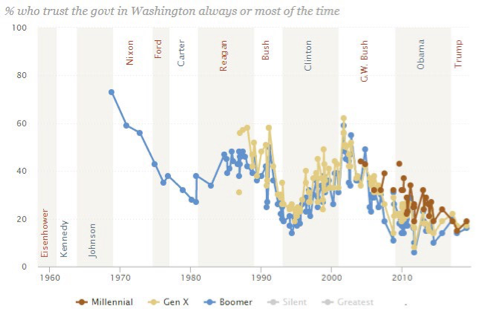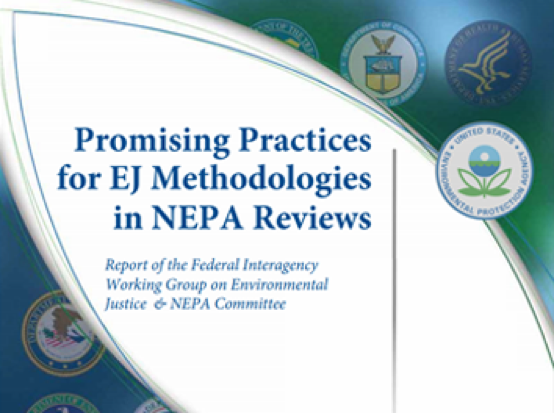Takeaways on Virtual Public Involvement and Engaging Environmental Justice Communities
![Header_805x366 [WEBINAR] Takeaways on Virtual Public Involvement and Engaging Environmental Justice Communities](https://metroquest.com/wp-content/uploads/Header_805x366.png)
Engaging with difficult-to-reach and underrepresented communities has always been a critical factor in public engagement and planning. But over the last few months, meaningful engagement has gained heightened consideration, with tensions in the U.S. leading to what Dave Biggs calls a ‘perfect storm’ for environmental justice.
In our recent webinar on Meaningful Engagement for Environmental Justice Without Public Meetings, expert speakers provided a vital update on environmental justice and discussed promising practices to reach traditionally underrepresented communities. You can watch the webinar online to catch up on the expert insights!
Speakers Denise Freeman, Elizabeth Poole, and Carolyn Nelson—all key members of the Interagency Working Group on Environmental Justice (EJ IWG)—deftly shared their expertise over the hour, with plenty of time afterwards to answer attendee questions. By exploring the history of NEPA, methodologies for diverse and inclusive outreach, and tools that agencies can use during the current climate where public meetings are impossible or difficult to achieve, this webinar provides an in-depth, educational look at meaningful engagement for environmental justice communities.
Read on for the major takeaways, and make sure to watch the webinar for the in-depth discussion!
What is Environmental Justice? Important Considerations for Public Involvement
Environmental justice (EJ) is the “fair and equal treatment and meaningful involvement of all people, regardless of race, ethnicity, culture, income or education level with respect to the development, implementation, and enforcement of environmental laws, regulations, and policies.”
As covered by Denise Freeman, achieving EJ is part of every federal agency’s mission in some capacity. EJ efforts attempt to identify and address disproportionately high and adverse human health or environmental effects. Environmental justice communities, identified as minority and low-income populations, should not bear “disproportionate share of negative environmental consequences resulting from business operations or from the execution of laws, regulations, and policies.”
In all areas of public outreach, from planning to NEPA to project implementation, EJ consideration is significant and necessary. Public input from typically underrepresented communities is vital to ensure that environmental justice is met; and as traditional public involvement methods meet with obstacles in this area, public participation professionals are beginning to utilize a wider range of solutions, such as virtual public involvement tools, to meet this responsibility.
Meaningful Public Participation is an Ongoing Process
In the webinar, Elizabeth Poole suggests that meaningful public engagement, particularly with disproportionately underrepresented populations, needs to be done “early, often, and ongoing”.
Public involvement that is thorough, well done, and completed in the early stages of the project helps agencies accelerate project delivery and build public trust by demonstrating ongoing concern for public issues throughout the project development and delivery processes.
To guarantee meaningful involvement, it’s important for agencies to provide the public with ample opportunity to learn about and give feedback on projects in their community. Meaningful engagement is a two-way process of building an on-going relationship and trust between the community and the agency. Informing the community (public outreach) and involving the community in project discussions (public participation) fulfills the dual importance of communicating with the public and ensuring that all concerns are heard.
However, the ‘old way’ of engaging with the public is typically ineffective when it comes to reaching EJ communities, meaning that public participation professionals need to get creative and consider nontraditional solutions to engage with hard-to-reach groups.
Use New Ways of Engagement to Reach EJ Communities
The inclusion of diverse populations is essential to creating better working relationships with the community and makes for a better decision-making process.
However, traditional methods of public engagement, such as in-person public meetings, do not create the best opportunities to reach underrepresented communities. As Carolyn Nelson pointed out, meaningful engagement of environmental justice communities requires specific strategies.
The goal of meaningful public involvement for environmental justice communities is to provide the same access to all groups, which “might mean they require different amounts of resources.”
Notifying communities about the project early on, by using media and communication methods preferred by the community, can be one way to facilitate public outreach to EJ communicates who might not be reachable through traditional methods. It’s important to overcome barriers, such as language, technology, and convenience, and stay sensitive to potential stressors and outside influences on the community. Including both traditional and non-traditional leadership, such as elders, religious leaders, social groups, and grassroots organizations, can also help agencies reach these groups.
Especially in the current climate, where in-person meetings above a certain number are prohibited or restricted, non-traditional methods of outreach are an excellent way of supplementing in-person public involvement efforts.
Understand the Pros & Cons of Virtual Public Involvement Tools
Virtual Public Involvement (VPI) tools are a range of digital technology tools that engage individuals or help visualize projects or plans. When it comes to reaching hard-to-reach communities, these are efficient solutions that go beyond traditional methods of public outreach and involvement, providing agencies with additional strategies and tools. While there are some concerns around the digital divide, studies show that 80% of U.S. adults own smartphones across demographics.
However, each agency has different requirements, and it’s important to be aware of the purpose of each virtual public involvement tool, the goals of your participation project, and whether your agency has the capacity to host the platform.
Some VPI tools help to enhance in-person events. For example, live polling at public meetings, street teams with technologies to gather input from passersby, or real-time translation devices that help limited English proficiency (LEP) communities during in-person outreach events. While these are useful, they may be less relevant in the current climate with in-person events at a halt.
Meanwhile, ‘All-in-One’ tools like MetroQuest allow agencies to educate members of the public, providing project context and visualizations, while simultaneously operating as input devices to gather public input. MetroQuest can be used on both mobile apps and web browsers. Citizens can take the surveys anywhere, including in their own homes and at their convenience, creating private experiences for unbiased input. Tools like MetroQuest allow agencies to reach a wider audience compared to public meetings by eliminating traditional barriers such as language, location, and convenience.
Build Public Trust with Communication After-the-Fact
Particularly when it comes to members of traditionally underrepresented communities, it’s important for agencies to build trust. Public involvement is a dual process of communication and input; so, as Dave Biggs puts it, the best way to build public trust is to “close the loop”.
Show participants that their public input has impact on community decisions that were made. Sharing survey results and communicating how participants’ public input affected outcomes can demonstrate to the community that their opinions are being valued and heard. This allows agencies to build goodwill and trust, and encourages the community to continue to participate.
Meaningful engagement of environmental justice communities is a complex and increasingly vital topic and is essential in allowing agencies to reach the most vulnerable and underrepresented people in our communities. But as public engagement transitions online, the tools and strategies that agencies and consultants use to reach EJ communities must evolve as well.
In the webinar, our expert panel deftly shares an essential update on Environmental Justice, exploring essentials tools and promising practices, and equipping planners and public involvement professionals nationwide with the knowledge and expertise they need to address EJ in their upcoming projects.
Watch the webinar for the full discussion, including 30 minutes of Q&A from your peers!
Meaningful Engagement for Environmental Justice Without Public Meetings
Watch this webinar for an update from the EJ IWG’s NEPA Committee, as we explore best practices for engaging the environmental justice community without public meetings.




